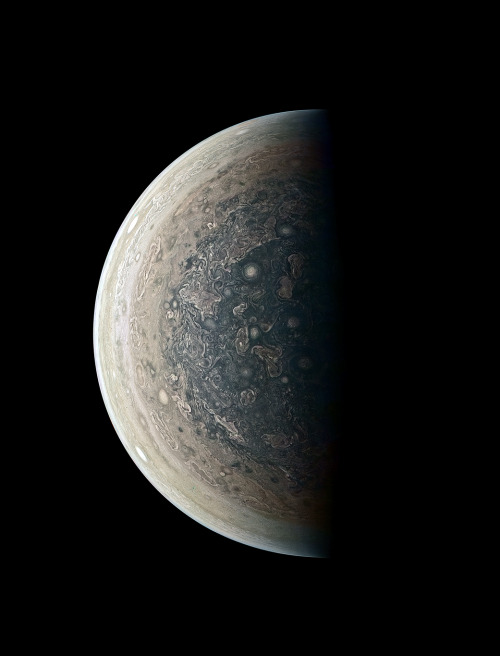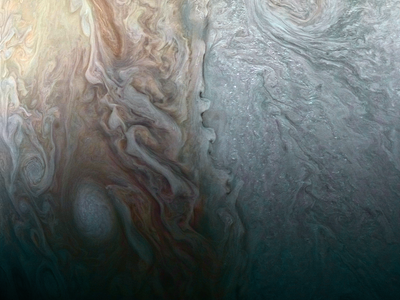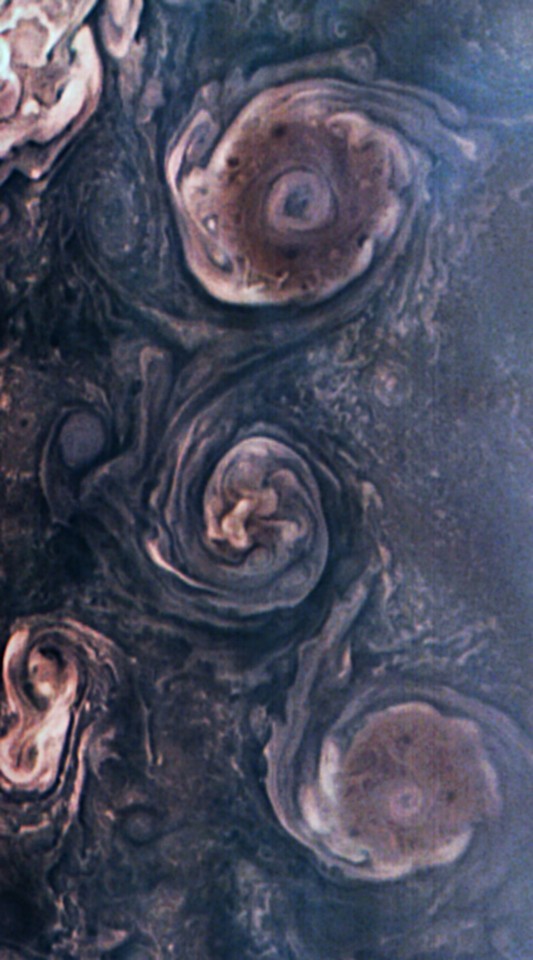Scientists Discover A 2-D Magnet

Scientists discover a 2-D magnet
Magnetic materials form the basis of technologies that play increasingly pivotal roles in our lives today, including sensing and hard-disk data storage. But as our innovative dreams conjure wishes for ever-smaller and faster devices, researchers are seeking new magnetic materials that are more compact, more efficient and can be controlled using precise, reliable methods.
A team led by the University of Washington and the Massachusetts Institute of Technology has for the first time discovered magnetism in the 2-D world of monolayers, or materials that are formed by a single atomic layer. The findings, published June 8 in the journal Nature, demonstrate that magnetic properties can exist even in the 2-D realm – opening a world of potential applications.
“What we have discovered here is an isolated 2-D material with intrinsic magnetism, and the magnetism in the system is highly robust,” said Xiaodong Xu, a UW professor of physics and of materials science and engineering, and member of the UW’s Clean Energy Institute. “We envision that new information technologies may emerge based on these new 2-D magnets.”
Xu and MIT physics professor Pablo Jarillo-Herrero led the international team of scientists who proved that the material – chromium triiodide, or CrI3 – has magnetic properties in its monolayer form.
Read more.
More Posts from Hannahhaifisch and Others




Ferrofluid!










Ask Ethan: Does Dark Energy Mean We’re Losing Information About The Universe?
“The universe’s expansion means our visible horizon is retreating; things faraway are vanishing continuously. (Albeit slowly, right now.) This would seem to imply we are losing information about the universe. So why is it the idea of losing information in a black hole’s event horizon is so controversial, if we’re constantly losing information to another horizon?”
As you look to greater and greater distances, you’re looking back in time in the Universe. But thanks to dark energy, what we can see and access today isn’t always going to be accessible. As galaxies grow more distant with the accelerated expansion of the Universe, they eventually recede faster than the speed of light. At present, 97% of the galaxies in the Universe aren’t reachable by us, even at the speed of light. But that isn’t the same as losing information. As a galaxy crosses over the horizon, its information never disappears from the Universe connected to us entirely. Instead, it gets imprinted on the cosmic horizon, the same way that information falling into a black hole gets imprinted on its event horizon. But there’s a fundamental difference between a black hole’s decaying horizon to the cosmic horizon’s eternal persistence, and that makes all the difference.
Come learn why even with dark energy, we don’t lose information about the Universe, but why the black hole information paradox is real!




Sand and water make a remarkable team when it comes to building. But the substrate – the surface you build on – makes a big difference as well. Take a syringe of wet sand and drip it onto a waterproof surface (bottom right), and you’ll get a wet heap that flows like a viscous liquid. Drop the same wet sand onto a surface covered in dry sand (bottom left), and the drops pile up into a tower. Watch the sand drop tower closely, and you’ll see how new drops first glisten with moisture and then lose their shine. The excess water in each drop is being drawn downward and into the surrounding sand through capillary action. This lets the sand grains settle against one another instead of sliding past, giving the sand pile the strength to hold its weight upright. (Video and image credit: amàco et al.)


170223

0063

Hold a buoyant sphere like a ping pong ball underwater and let it go, and you’ll find that the ball pops up out of the water. Intuitively, you would think that letting the ball go from a lower depth would make it pop up higher – after all, it has a greater distance to accelerate over, right? But it turns out that the highest jumps comes from balls that rise the shortest distance. When released at greater depths, the buoyant sphere follows a path that swerves from side to side. This oscillating path is the result of vortices being shed off the ball, first on one side and then the other. (Image and research credit: T. Truscott et al.)

69.6027062, -25.5389832









Images of Jupiter taken by JunoCam on NASA’s Juno spacecraft.

Mission Juno
Juno is a NASA spacecraft. It is exploring the planet Jupiter. Juno launched from Earth in 2011. It reached Jupiter in 2016. That was a five-year trip!
The name “Juno” comes from stories told by the Romans long ago. In the stories, Juno was the wife of Jupiter. Jupiter hid behind clouds so no one could see him causing trouble. But Juno could see through the clouds.
Juno has science tools to study Jupiter’s atmosphere. (The atmosphere is the layer of gases around a planet.) Juno will take the first pictures of Jupiter’s poles. The spacecraft will study the lights around Jupiter’s north and south poles, too.
Juno will help scientists understand how Jupiter was made. The spacecraft will help them learn how Jupiter has changed, too. The new discoveries can help us understand more about our solar system.
Sound of Jupiter’s Magnetosphere: Click here
Credit: NASA / JPL-Caltech / Mission Juno / Jason Major / Luca Fornaciari / Gerald Eichstädt


Physicists discover hidden aspects of electrodynamics
Radio waves, microwaves and even light itself are all made of electric and magnetic fields. The classical theory of electromagnetism was completed in the 1860s by James Clerk Maxwell. At the time, Maxwell’s theory was revolutionary, and provided a unified framework to understand electricity, magnetism and optics.
Now, new research led by LSU Department of Physics and Astronomy Assistant Professor Ivan Agullo, with colleagues from the Universidad de Valencia, Spain, advances knowledge of this theory. Their recent discoveries have been published in Physical Review Letters.
Maxwell’s theory displays a remarkable feature: it remains unaltered under the interchange of the electric and magnetic fields, when charges and currents are not present. This symmetry is called the electric-magnetic duality.
However, while electric charges exist, magnetic charges have never been observed in nature. If magnetic charges do not exist, the symmetry also cannot exist. This mystery has motivated physicists to search for magnetic charges, or magnetic monopoles. However, no one has been successful. Agullo and his colleagues may have discovered why.
Read more ~ SpaceDaily
-
 arcticwarfarepolizei liked this · 7 years ago
arcticwarfarepolizei liked this · 7 years ago -
 jaunit liked this · 7 years ago
jaunit liked this · 7 years ago -
 dissyparadiddle liked this · 7 years ago
dissyparadiddle liked this · 7 years ago -
 sciencenerd4-blog liked this · 7 years ago
sciencenerd4-blog liked this · 7 years ago -
 awakeners liked this · 7 years ago
awakeners liked this · 7 years ago -
 thenanoscientist-blog liked this · 7 years ago
thenanoscientist-blog liked this · 7 years ago -
 flxcat1210 liked this · 7 years ago
flxcat1210 liked this · 7 years ago -
 hannahhaifisch reblogged this · 7 years ago
hannahhaifisch reblogged this · 7 years ago -
 hannahhaifisch liked this · 7 years ago
hannahhaifisch liked this · 7 years ago -
 frankalcantara liked this · 7 years ago
frankalcantara liked this · 7 years ago -
 bennyhoneybee reblogged this · 7 years ago
bennyhoneybee reblogged this · 7 years ago -
 vpng reblogged this · 7 years ago
vpng reblogged this · 7 years ago -
 oneapplepiefromscratchplease reblogged this · 7 years ago
oneapplepiefromscratchplease reblogged this · 7 years ago -
 robote liked this · 7 years ago
robote liked this · 7 years ago -
 thoths-foundry-blog reblogged this · 7 years ago
thoths-foundry-blog reblogged this · 7 years ago -
 oneapplepiefromscratchplease reblogged this · 7 years ago
oneapplepiefromscratchplease reblogged this · 7 years ago -
 oneapplepiefromscratchplease liked this · 7 years ago
oneapplepiefromscratchplease liked this · 7 years ago -
 jonaseklof reblogged this · 7 years ago
jonaseklof reblogged this · 7 years ago -
 jonaseklof liked this · 7 years ago
jonaseklof liked this · 7 years ago -
 theatomscombined liked this · 7 years ago
theatomscombined liked this · 7 years ago -
 yourfunwithchem liked this · 7 years ago
yourfunwithchem liked this · 7 years ago -
 aninhaelric liked this · 7 years ago
aninhaelric liked this · 7 years ago -
 projection-operator liked this · 7 years ago
projection-operator liked this · 7 years ago -
 kandrakelsier reblogged this · 7 years ago
kandrakelsier reblogged this · 7 years ago -
 kennethstudstill liked this · 7 years ago
kennethstudstill liked this · 7 years ago -
 antonovsworld-blog liked this · 7 years ago
antonovsworld-blog liked this · 7 years ago -
 hvverfa liked this · 7 years ago
hvverfa liked this · 7 years ago -
 octophi liked this · 7 years ago
octophi liked this · 7 years ago -
 ncow reblogged this · 7 years ago
ncow reblogged this · 7 years ago -
 sentinelcore liked this · 7 years ago
sentinelcore liked this · 7 years ago -
 vkazumi liked this · 7 years ago
vkazumi liked this · 7 years ago -
 materialsscienceandengineering reblogged this · 7 years ago
materialsscienceandengineering reblogged this · 7 years ago